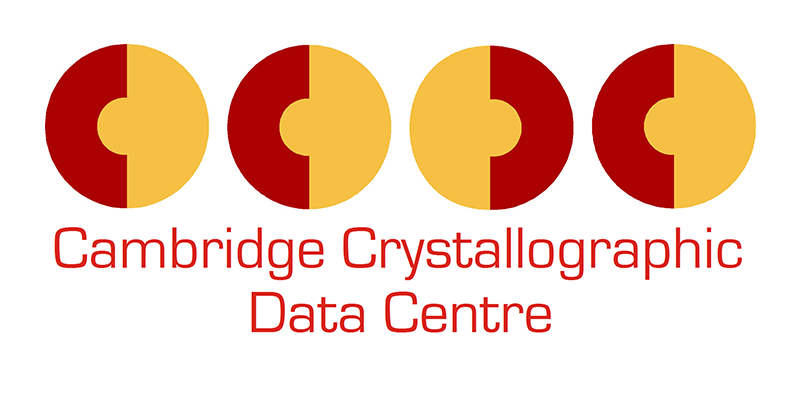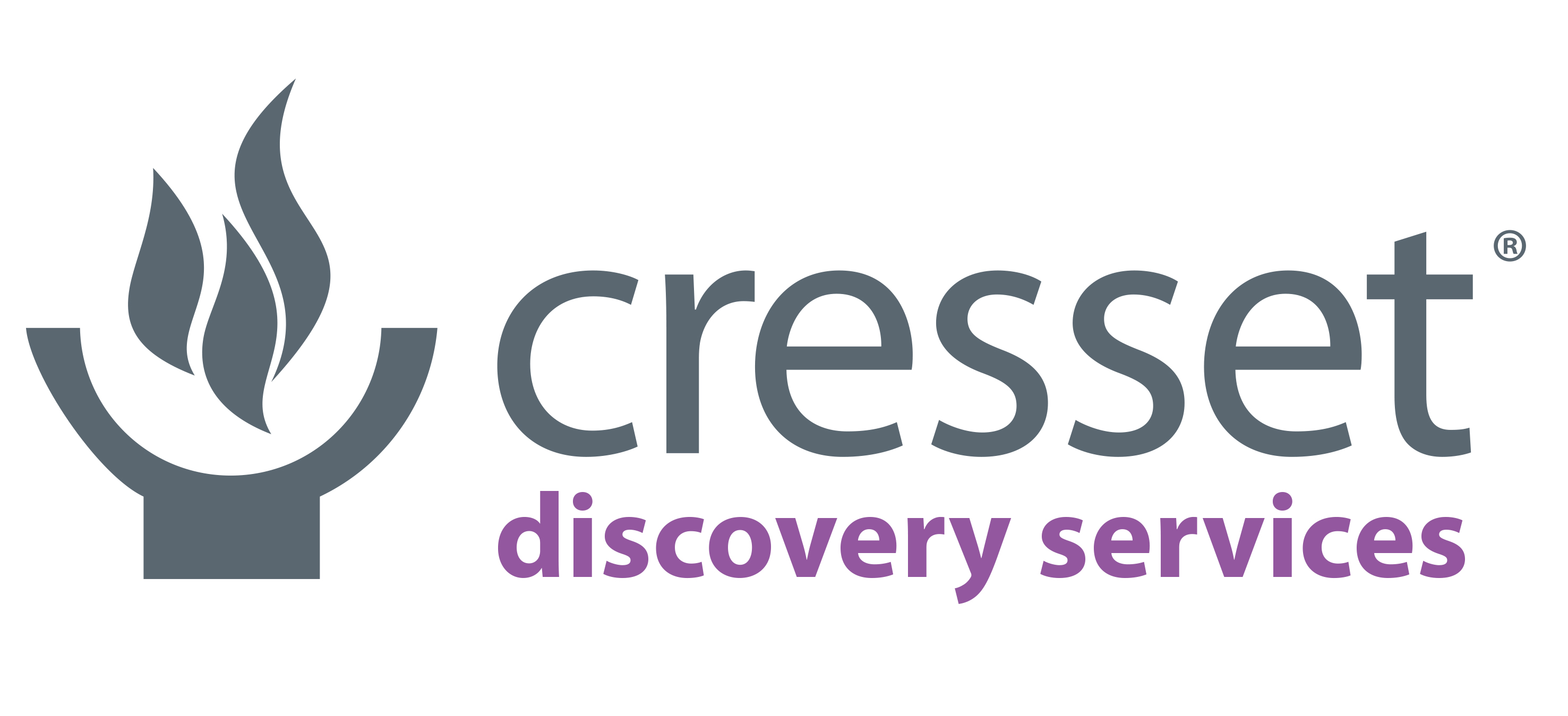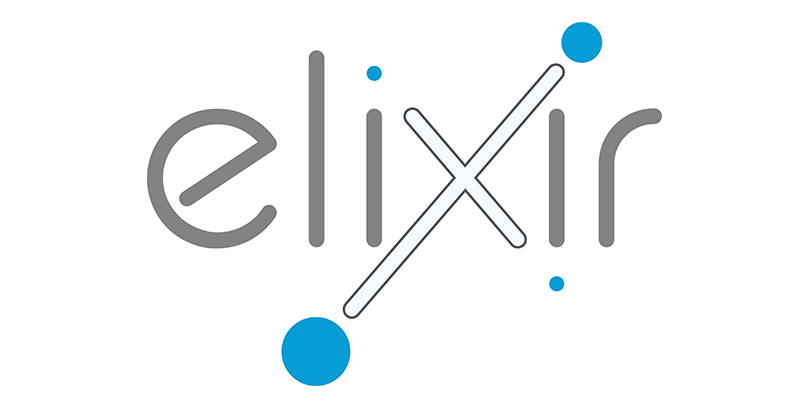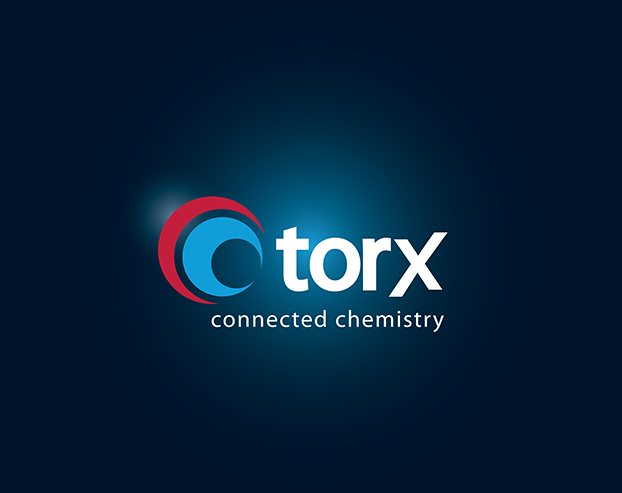Events
Cresset User Group Meeting 2019
Overview
The Cresset team and I would be delighted to welcome you to the Cresset User Group Meeting 2019.
As well as invited presentations from leading researchers in our field, Cresset scientists will present our latest science and showcase upcoming applications to help your chemists design the best molecules as efficiently as possible.
Whether you are new to Cresset, have been with us from the beginning, or are just intrigued to find out more about the solutions we offer, I look forwards to seeing you there.
Who should attend by role?
Computational chemist • Medicinal chemist • Synthetic chemist • Flavor chemist • Fragrance chemist • Head of discovery • Head of modeling and simulation • Head of R&D • Research Scientist • CSO
Who should attend by industry?
Pharmaceutical • Agrochemical • Biotech • Flavor • Fragrance • Chemical
Feedback from previous meetings
“One of the best meetings I’ve ever been to. Good science. Collaborative and engaging discussions.”
“Two very useful and interesting workshops. As always a really interesting 2 days. Learned a great deal. Thank you.”
“Very well organized, with a great talk line-up. Everyone is so friendly and approachable. The meeting is reminiscent of a Gordon conference. Looking forward to coming back next year.”
“The meeting was really great, I learnt quite a few new things, or deepened my knowledge of established applications. It was also a great opportunity for networking, talking to other users and to members of the Cresset team.”
“I really enjoyed attending the users group meeting, my first. It was great to see how the suite of software has evolved over many years to become a readily accessible, unique set of applications regularly used by practicing medicinal chemists. The whole team at Cresset should be proud of what they have achieved in pursuing and developing the original vision.”
June 20: Scientific program
Cresset presentations
| Time | Title | Presenter |
| 08:30 | Registration | |
| 09:00 | Welcome by meeting chairman | Rob Scoffin, Cresset |
| 09:15 | Cresset Science: The Future Today | Mark Mackey, Cresset, UK |
| 09:45 | Blazing Light: Combining Computational and Phenotype-based Drug Discovery to Restore Vision | Breandán Kennedy, University College Dublin, Ireland |
| 10:15 | Torx: Connected Chemistry | Tim Cheeseright, Cresset, UK |
| 10:45 | Break, Exhibition | |
| 11:25 | Design at AbbVie in the 21st Century | Mike Hoemann, AbbVie Inc., USA |
| 11:55 | What’s New in the Cresset Desktop Applications: Flare, Forge, Spark | Giovanna Tedesco, Cresset, UK |
| 12:25 | Exhibitor flash presentations | Exhibitors |
| 12:40 | Lunch, Exhibition | |
| 14:00 | Experiences in Establishing a Computational Chemistry Platform for Medicinal Chemistry Designers at Cancer Research UK – Manchester Institute | Rae Lawrence, CRUK MI, UK |
| 14:20 | Drug Repurposing: Computational and Cell-based Approaches | Richard Head, University of South Australia, Australia |
| 14:50 | Introducing PickR: Generate Diverse R-groups for Hit Finding Libraries | Paolo Tosco and Tim Cheeseright, Cresset, UK |
| 15:20 | Break, Exhibition | |
| 16:00 | A Tale of Hide and Seek: Hit to Drug Candidate | Inhee Choi, Institut Pasteur, South Korea |
| 16:30 | Unique Insights into GPCR Allosteric Modulators Through the Application of Orthogonal Techniques Spanning Multiple Timescales | Zara Sands, UCB, Belgium |
| 17:00 | Closing remarks | Rob Scoffin, Cresset, UK |
| 17:20 | Drinks reception and networking (in exhibitor room) | |
| 18:45 | Dinner |
Exhibitors
| CCDC | Cresset Discovery Services | Elixir Software | Cresset | MedChemica |
 |
 |
 |
 |
 |
June 21: Workshops
Hands-on software workshops will run in two parallel sessions from 09:00 to 13:00.
Web-based collaborative 3D design
Who should attend: Medicinal chemists
See how Torx Design can smooth your design workflow. Discover the collaborative features that will enable you to connect with colleagues and data to design the best next step. Learn how to view, comment and vote on the designs of colleagues. Participate in a collaborative session to review and progress existing designs.
Using electrostatics in structure-based design with Flare™
Who should attend: Computational, medicinal and synthetic chemists
Learn how easy it is in Flare to create detailed maps of the electrostatic character of the protein active site and your ligands. Learn how to use Electrostatic Complementarity maps to design new molecules with the ideal electrostatic properties to bind strongly to your protein, and how to rapidly predict activity for new molecule designs using Flare’s Electrostatic Complementarity scores.
Become a Flare™ power-user with Python extensions
Who should attend: Computational, medicinal and synthetic chemists
Learn how to access and use the Cresset Python extension for Flare, a collection of Python scripts which significantly extend the functionality of Flare.
Designing new molecules in Flare™
Who should attend: Medicinal chemists
Learn how to design ligands that are electrostatically complementary to the protein active site. You will see how the user-friendly GUI and workflows of Flare makes this process simple and intuitive.
Python in Flare™ for developers
Who should attend: Computational chemists
The Flare Python API brings scripting and customization to the Cresset suite. In this workshop you will learn how to use the Flare API to automate tasks, interface with other Cresset software through REST services and build interactive and reusable workflows using Jupyter Notebooks within Flare.
Become a power-user of Spark™
Who should attend: Medicinal chemists
Explore the new wizards in Spark to run advanced bioisostere replacement experiments. Learn how to set-up fragment linking, growing and macrocyclization experiments in an easy and scientifically robust manner by using the dedicated wizards and calculation methods.
Machine learning for ligand-based design with Forge™ - FULLY BOOKED
Who should attend: Computational chemists
Learn how build multiple regression and classification models in Forge using the new Machine Learning methods, choosing those with the best predictive ability for your data set; use the best models to predict activity for new compound design.
Forge and Spark tips and tricks
Who should attend: Computational, medicinal and synthetic chemists with hands-on experience of Forge and Spark
Build on your existing knowledge of Forge and Spark to gain a deep insight into useful but less obvious functionality of our ligand-based design applications. Discover the tips and tricks we use to get the best results both a run time and in post processing. Learn how to combine Spark and Forge to provide a complete ligand-based design workflow.
Abstracts
Torx: Connected Chemistry
Tim Cheeseright, Cresset
Torx will be our new web-based application for drug discovery. It provides a central hub to analyze, design, and track the synthesis of small molecule drug candidates. The modular construction and central theme of collaborative working enables you to connect with disparate people and information.
In this presentation we will introduce the Torx Design and Torx Analysis modules. Each module has been created to connect the user with all the information that is vital to modern projects. We will show how Torx can be used to:
- Turn an idea into a set of molecule designs that neatly and concisely express you hypothesis
- Create designs in 2D with live interpolation to 3D
- Gain live feedback on molecule properties, fit to a QSAR model, or the most similar compound in a database
- Store and organize all your ideas
- Enable ideas from across each project to be collated, viewed and reviewed by individuals
- Decide which molecules should be progressed through to synthesis and which should be parked
- Create detailed analyses of project data using beautiful plots and graphs
- Dock all the compounds in a project to the protein of interest
- Align molecules to a reference compound and view the results in the protein active site
We will showcase the current status of the application, discussing the future road-map and the path to release.
Cresset Science: The Future Today
Mark Mackey, Cresset
The Cresset science team have been busy over the last year bringing improvements to both our ligand-based and structure-based applications. From improved QSAR in the ligand space to the new Electrostatic Complementarity™ algorithm, we have developed new ways to help you design better ligands. However, there is even more still to come from the Cresset labs. In this talk we present the upcoming science and new features that are on the Cresset roadmap for 2019/20, including improvements to Electrostatic Complementarity and our own take on free energy perturbation.
What's New in the Cresset Desktop Applications: Flare, Forge, Spark
Giovanna Tedesco, Cresset
I will introduce the new science, features and improvements in the recent releases of Flare™, Forge™ and Spark™, highlighting the benefits that they bring to ligand- and structure-based design. These include Electrostatic Complementarity™ maps and scores in Flare, the Flare Python API, the Machine Learning methods for building classification and regression models in Forge, the new wizards and databases in Spark. I will conclude giving you a sneak peek at the new science and features in the upcoming releases of Flare, Forge and Spark.
Introducing PickR: Generate Diverse R-groups for Hit Finding Libraries
Paolo Tosco and Tim Cheeseright, Cresset
Diverse library design is an important technique for generating new chemical matter for hit finding. The ultimate goal is to obtain the broadest coverage of chemical space while minimizing the number of molecules to buy or synthesize.
Existing techniques generally use 2D methods based on chemical features or structural graphs to assess the similarity of any two compounds. While 2D methods are fast, they have significant limitations in their ability to capture the biological similarity between molecules. Structures which largely differ in functional group decoration may give rise to quite similar steric and electrostatic properties, which ultimately drive their recognition by biological macromolecules. Moving from 2D to 3D brings a richer and more realistic description of molecular interactions. However, the need for conformational sampling increases the size and complexity of calculations.
Most libraries are constructed using a combinatorial paradigm, such that the selection of the final molecules to be included in the library can be simplified to the selection of a suitable range of R-groups. To assess the diversity of these R-groups, the PickR algorithm aligns all reagents on a common bond, usually the bond formed in the combinatorial reaction, and computes the electrostatic and shape similarity of each pair of conformations. As the alignment along a bond involves a rotational degree of freedom, multiple mutual arrangements of each reagent pair are sampled to make sure that the best overlap is attained. This procedure leads to a single similarity value for each reagent pair, which is collected into a similarity matrix. Clustering this matrix yields to a diverse pick of R-groups being prioritized for inclusion in the library.
We will describe how PickR can be run on a single workstation or on a cluster, either in-house or cloud-based, and we will present an example of the application of PickR to library design, comparing the results to those obtained using a 2D method.
Drug Repurposing: Computational and Cell-based Approaches
Richard Head, University of South Australia
The rapid development of effective cancer therapies is required to decrease the global burden of cancer. One approach is to repurpose established non-cancer drugs for anti-cancer uses (therapeutic switching). In this context we have focused on exploring the potential of repurposed drugs based upon inhibition of protein kinases, which were selected for their well-established roles in regulating programmed cell death and the contemporary role of kinase driven pathways as key cancer targets (Gross et al 2015).
Using a template based upon our kinase inhibitor drug candidate we conducted computational analysis with Cresset Ltd, UK which involved the in-silico examination of approximately 9000 approved or experimental drugs. From this analysis 73 drugs were initially selected and further refined. We then conducted cell viability assays to determine the anti-proliferative activity of the compounds of interest selected from the initial screen. From this biological screen we focused on one compound (SI-31) and determined its activity on 46 human kinases. SI-31 was found to be a potent inhibitor of Aurora-A kinase (Ki < 200nM). Consistent with this finding we established that SI-31 when added to cancer cells induced apoptosis and promoted arrest in the G2/M phase or at the G-1 phase of cell cycle depending on the cancer cell type.
We have characterised the molecular events underpinning the ability of this compound to act at the two critical checkpoints. This study draws attention to experimental advantages of integrating computational and cell-based experiments in the area of experimental drug repurposing.
- Gross S, Rahal R, Stransky N, Lengauer C, Hoeflich KP. Targeting cancer with kinase inhibitors. J Clin Invest. 2015 May;125(5):1780-9.
Design at AbbVie in the 21st Century
Michael Hoemann, AbbVie, USA
Drug design in the 21st century can be made more efficient through thoughtful application of computational tools. AbbVie small molecule immunology programs use a variety of computational platforms in both screening and scoring of virtual compounds for example. This talk will highlight methods for the analysis of large numbers of virtual compounds through docking (i.e. Glide, Gold etc), clustering (i.e. tSNE), similarity analysis (i.e. Rocs Overlay™ and Cresset Torch™) and QSAR Models (i.e. Forge) of ligand-protein interactions. In particular, workflows designed to identify ligands through virtual library screens (i.e. Blaze) will be presented. In addition, it is recognized that protein-ligand complexes are not static solid state structures, but are dynamic and fluid. Therefore, this talk will also cover some of the early work we have been doing around dynamic simulations (MM-GBSA, Desmond MD, MetaDynamics and FEP+) to help prioritize compounds for synthesis. These tools when combined together can provide validated workflows to improve the efficiency of small molecule drug discovery.
A Tale of Hide and Seek: Hit to Drug Candidate
Inhee Choi, Institut Pasteur, South Korea
Finding an ideal hit compound from high throughput screening (HTS) which will be optimized to a drug candidate is not a simple task. Currently, a very high and expensive failure rate in finding the reasonable lead series from HTS during the early-stage drug discovery is a bottleneck in drug development. Therefore, selecting meaningful compounds from a slew of commercially available compounds is important. Recently, IPK has established additional 100K chemical libraries to encompass structural diversity and physicochemical property aspects. To upgrade structural diversity, Bemis-Murcko substructures were generated from historical IPK collections (around 74,000 substructures), and compounds with those similar substructures were not cherry picked from new chemical libraries. Finally, structural fingerprints were used to select diverse subsets of compounds having those selected substructures. Structurally diverse compounds will be continuously obtained based on the strategic designs of scaffolds using Spark to fill up the structural diversity gaps of chemical spaces. By procuring large scale compounds enhanced in structural diversity, IPK has in prospect to find hits from HTS screening just like the hit compound which was successfully optimized to be the novel TB drug candidate, Telacebec.
Blazing Light: Combining Computational and Phenotype-based Drug Discovery to Restore
Breandán Kennedy, University College Dublin, Ireland
Our goal is to identify drugs that can preserve or restore vision in vivo. We developed bespoke phenotype-based assays of visual behaviour in zebrafish (Deeti et al 2014). Screens of small molecule chemical libraries identified drugs that restore visual function (e.g. Tubastatin, 7,8 dihydroxyflavone) in zebrafish models of inherited blindness (Daly et al. 2017. Leyk et al. 2017, Ward et al. 2019). These drugs improve the number of saccades observed in the optokinetic response assay, reduced the number of dying cells in the retina and improve photoreceptor morphology. To identify additional drugs that restore vision, we performed computational analyses to identify 3D analogs of 7,8 dihydroxyflavone, a brain derived neurotrophic factor (BDNF) mimetic. Fifty 3D analogs were selected and 3 were sufficient to significantly improve visual behaviour in the zebrafish dye model of inherited blindness.
- Deeti S, O'Farrell S, Kennedy BN. Early safety assessment of human oculotoxic drugs using the zebrafish visualmotor response. J Pharmacol Toxicol Methods. 2014 Jan-Feb;69(1):1-8
- Daly C, Shine L, Heffernan T, Deeti S, Reynolds AL, O'Connor JJ, Dillon ET, Duffy DJ, Kolch W, Cagney G, Kennedy BN. A Brain-Derived Neurotrophic Factor Mimetic Is Sufficient to Restore Cone Photoreceptor Visual Function in an Inherited Blindness Model. Sci Rep. 2017 Sep 12;7(1):11320.
- Leyk J, Daly C, Janssen-Bienhold U, Kennedy BN, Richter-Landsberg C. HDAC6 inhibition by tubastatin A is protective against oxidative stress in a photoreceptor cell line and restores visual function in a zebrafish model of inherited blindness. Cell Death Dis. 2017 Aug 31;8(8):e3028.
- Ward R, Ali Z, Slater K, Reynolds AL, Jensen LD, Kennedy BN. Pharmacological restoration of visual function in a zebrafish model of von-Hippel Lindau disease. Dev Biol. 2019 Feb 27. pii: S0012-1606(18)30731-0.
Experiences in Establishing a Computational Chemistry Platform for Medicinal Chemistry Designers at Cancer Research UK - Manchester Institute
Rae Lawrence, CRUK MI, UK
The modern-day medicinal chemist is not a narrow specialist who spends their days clad in lab-coats and goggles, setting up rows of parallel reactions, and planning syntheses on paper (with obligatory coffee ring). Instead, these scientists have, in recent years, evolved into 'Molecular Architects', who meticulously introduce specific design features into their chemistry with the goal to drive potency, selectivity, ADMET, or to challenge what is known about their SAR. Over time, software has become a critical part of their work: from 2D reaction planning in ChemDraw, to 3D design and optimisation in computational chemistry packages. In this talk, I will share the trials, tribulations, failures and victories we’ve encountered as our medicinal chemistry team embraces the role of Molecular Architect, how our team is using software applications today, and our strategy for the future.
Unique Insights into GPCR Allosteric Modulators Through the Application of Orthogonal Techniques Spanning Multiple Timescales
Zara Sands, UCB, Belgium
Many G-protein coupled receptors crystal structures have been solved in recent years. Such structures can be exploited to support drug discovery endeavours. However, they can be of limited utility if one is interested in studying ligands that bind to a state or pocket that is not captured in the available target structure(s). In this talk I will present how we are using advanced molecular dynamics simulations, in combination with orthogonal experimental techniques, to map conformational landscapes and allosteric binding sites for GPCR targets of therapeutic relevance. This has enabled us to elucidate novel insights into the modulation of GPCR targets by allosteric compounds.
Location
The Møller Centre, Churchill College, Storey’s Way, Cambridge, CB3 0DE, UK.
Accommodation
Enquire to see if there is still availability at The Møller Centre on June 20th, alternatively the following hotels are close by.
- Premier Inn Cambridge North 0.7 mile
- Hotel Felix 1 mile
- Arundel House Hotel 1.3 miles
- Doubletree by Hilton Cambridge City Centre 2 miles
- Lensfield Hotel 2.3 miles
- Hilton Cambridge City Centre 2.9 miles
Register
Registration is now closed.